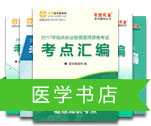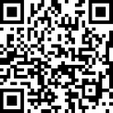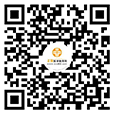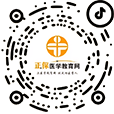“医学知识双语阅读:头痛”相信是准备学习医学英语的朋友比较关注的事情,医学类英语词汇繁杂且难记,运用在实际中较难理解,所以下面医学教育网小编为大家整理了在实际工作生活会遇到情景阅读,供学员朋友们加强对医学英语的理解:
Headache (cephalalgia) is a common symptom, often associated with disability, but rarely life threatening. Headaches may be a primary disorder (migraine, cluster, or tension headache) or a secondary symptom of such disorders as acute systemic or intracranial infection, intracranial tumor, head injuries, severe hypertension, cerebral hypoxia, and many diseases of the eyes, nose, throat, teeth, ears, and cervical vertebrae. Sometimes no cause is found.
头痛是一种常见症状,常常与功能障碍有关,但很少危及生命。头痛可能是一种原发性疾病(如偏头痛,丛集性头痛或紧张型头痛),也可能是某些疾病的继发症状,如急性全身性感染或颅内感染、颅内肿瘤、头外伤、严重的高血压、脑缺氧、及眼、耳、鼻、喉、口腔牙齿和颈椎等多种疾病,有时找不到任何病因。
Headaches may result from stimulation of, traction of, or pressure on any of the pain-sensitive structures of the head: all tissues covering the cranium; the 5th, 9th, and 10th cranial nerves; the upper cervical nerves; the large intracranial venous sinuses; the large arteries at the base of the brain; the large dural arteries; and the dura mater at the skull base. Dilation or contraction of blood vessel walls stimulates nerve endings, causing headache. The cause of most headaches is extracranial rather than intracranial. Stroke, vascular abnormalities, and venous thromboses are uncommon causes of headache.
对头部任何疼痛敏感结构的刺激、牵引或压迫都能引起头痛,这些结构包括覆盖头颅的所有组织;第5、9、10颅神经;上部颈神经;颅内大静脉窦;颅底大动脉;硬脑膜大动脉以及颅底硬脑膜。血管壁的扩张或收缩刺激神经末梢,引起头痛。大多数头痛的病因为颅外性而非颅内性。因脑卒中、血管畸形与静脉血栓形成引起的头痛并不常见。
DiagnosisThe frequency, duration, location, and severity of the headache; the factors that make it better or worse; associated symptoms and signs, such as fever, stiff neck, nausea, and vomiting; and special studies help identify the cause of headache.
诊断
诊断内容包括:头痛的发生频率、持续时间、部位、严重程度;改善或加剧头痛的因素;相关症状与体征(如发热、颈项强直、恶心与呕吐);及辅助头痛病因检查的特殊检查。
Secondary headaches may have specific characteristics. An acute whole-cranial, severe headache associated with fever, photophobia, and stiff neck indicates an infectious process, such as meningitis, until proved otherwise. Subarachnoid hemorrhage also causes acute headache with symptoms and signs of meningeal irritation. Space-occupying lesions often cause subacute, progressive headache. New-onset headache in an adult > 40 yr always requires thorough evaluation. With space-occupying lesions, the following may occur: headache on awakening or at night, fluctuation of headache with postural changes, and nausea and vomiting. Additional neurologic complaints, such as seizure, confusion, weakness, or sensory changes, may occur late and are ominous.
一些继发性头痛具有某些特定特征。急性、剧烈的满头痛伴发热、畏光和颈项强直,提示感染,如脑膜炎,应寻找证据加以排除。蛛网膜下腔出血也能引起急性头痛,常伴有脑膜刺激的症状与体征。占位性病变常常引起亚急性、渐进性头痛。40岁以后新发病的头痛始终需要彻底的评估。。颅内占位性病变引起的头痛可出现下列情况:睡醒时或夜间头痛,体位改变引起头痛变化,恶心和呕吐。其他神经性疾病主诉,如惊厥发作、精神错乱、无力或感觉异常变化等,出现较迟,为恶性症状。
Tension headache tends to be chronic or continuous and commonly originates in the occipital or bifrontal region, then spreads over the entire head. It is usually described as a pressure sensation or a viselike constriction of the skull. Febrile illnesses, arterial hypertension, and migraine usually cause throbbing pain that can occur in any part of the head.
紧张型头痛往往表现为慢性或持续性,通常始于枕部或双额部,然后扩散到整个头部,常被病人描述为受压感或颅紧箍感。发热性疾病、动脉性高血压以及偏头痛通常引起搏动性头痛,可出现在头部任何部位。
Useful tests include CBC, STS, serum chemistry profile, ESR, CSF examination, and, for specific symptoms, ocular tests (acuity, visual fields, refraction, intraocular pressure) or sinus x-rays. If the cause of recent, persistent, recurrent, or increasing headache remains in doubt, MRI and/or CT is appropriate, especially if abnormal neurologic signs are present.
有用的检查包括血常规、梅毒血清试验、血生化分析、血沉与脑脊液检查,如有特殊症状,应进行视觉检查(视敏度、视野、屈光、眼内压)或鼻窦X线检查。如对最近发生的持续、反复、或程度加重的头痛,无法查明其原因的,就应作MRI和/或CT检查,特别是出现异常神经体征时。
Treatment Many headaches are of short duration and require no treatment other than mild analgesics (eg, aspirin, acetaminophen) and rest.
治疗
很多头痛都是短期的,除服用一些轻镇痛剂(如阿司匹林或扑热息痛)及休息外,无需其他治疗。
Treatment of primary headaches is discussed under the specific disorders, below. Alternative approaches, such as biofeedback, acupuncture, dietary manipulations, and some less conventional modes, have been advocated for these disorders. None of these treatments has shown clear-cut benefits in rigorous studies. However, to the extent that an alternative treatment poses little risk, it may be tried, with the idea that effective headache management is multidimensional.
原发性头痛的治疗将在下文讨论。有人主张采用不同的治疗措施,如生物反馈、针灸、饮食调控及某些较少使用的治疗方式。这些治疗措施都未能在严格的检验中证明其明确的疗效。不过,既然这些另类治疗措施几乎没什么风险,试一下倒也不妨,因为有效的头痛治疗本来也是多种多样的。
Treatment of secondary headaches depends on treatment of the underlying disorder. For meningitis, prompt antibiotic therapy is critical. Subsequently, symptoms can be relieved with analgesics, including acetaminophen, NSAIDs, or opioid narcotics. Certain disorders require more specific treatment; eg, temporal arteritis is treated with corticosteroids, and headache due to benign intracranial hypertension is treated with acetazolamide or diuretics and weight loss. Subdural hematomas or brain tumors may be treated surgically.
继发性头痛的治疗取决于潜在疾病的治疗。对脑膜炎而言,即时的抗生素治疗至关重要。以后,镇痛剂,包括扑热息痛、非类固醇抗炎药或阿片类麻醉剂,都可用于缓解头痛症状。有些疾病则需要更专门的治疗。如,颞动脉炎需用肾上腺皮质激素治疗,由良性颅内压增高引导的头痛则可用乙酰唑胺或利尿剂,并配合减轻体重。硬膜下血肿或脑肿瘤则需进行外科手术。
Stress management taught by a psychologist often reduces the incidence of headaches. However, most patients are helped by an understanding physician who accepts the pain as real, sees the patient regularly, and encourages discussion of emotional difficulties, whether they are the cause or the result of chronic headaches. The physician can reassure the patient that no organic lesion is present and recommend environmental readjustments and the removal of irritants and stresses. For particularly difficult problems, a team composed of a physician, psychotherapist, and physiotherapist is most effective in managing chronic headache.
心理医生的减压疗法常常可以减少头痛的发病率。不过,大多数病人还是要由懂行的医生来治疗,定期随访,鼓励讨论一些情感问题,不管这些习慢性头痛是否由这些因素引起或是头痛导致这些问题,医生的这些措施对病人都是有帮助的。医生可以安慰病人,告诉他并不存在器质性病变,并量出一些环境适应方面的建议及消除刺激与压力方法。对一些特别难处理的病情,则应交给由临床医生、心理治疗医生和理疗师组成的医疗小组来处理,他们在治疗慢性头痛方面是最为有效的。
Night sweats are drenching sweats that require a change of bedding.
盗汗为淋透性出汗,需换床单。
I. Approach. The first priority is to exclude night sweats caused by fever. Sweating associated with fever is a separate evaluation. Before the 20th century, night sweats implied infection with tuberculosis. Now, many other ailments are associated with this symptom. Night sweats are often the mark of a known condition such as diabetes (especially with nocturnal hypoglycemia), cancer, head trauma, and rheumatologic disorders. Night sweats can also be a symptom of a new disorder. The investigation of a patient reporting night sweats requires a review of past illnesses and new symptoms.
I. 诊断。首先要排除发烧引起的出汗。发烧性出汗应另行诊断。20世纪前,盗汗通常提示有结核菌感染。现在,其他很多不适都与此症状相关。盗汗通常是某已知病症的标志,如糖尿病(特别是伴夜间低血糖者)、癌症、头外伤和各种风湿病。盗汗也可能是新的疾病的一种症状,在给盗汗报告病人进行检查时,需检查既往病史及新的症状。
II. History. Night sweats can be characterized by determining onset, frequency, exacerbations, and remissions of symptoms. Question patients about the current state of known disorders. Excessive sweating is associated with poor nocturnal glycemic control. Flares of rheumatologic disorders (rheumatoid arthritis, lupus, juvenile rheumatoid arthritis, and temporal arteritis) cause sweating too. Pregnancy temporarily changes the intrinsic thermostat in many women who perspire excessively. Patients who are immuno-compromised are at increased risk for infections, especially with atypical agents. Patients with a history of substance abuse need to be asked about needle use and contaminants.
II. 病史。盗汗可通过确认发作时间、次数、加剧及症状消退加以确定。询问病人已知疾病。多汗也与夜间血糖控制不良有关。风湿性疾病(如类风湿关节炎、狼疮、幼儿性类风湿性关节炎、颞关节炎等)也导致出汗,妇娠也会暂时的改变很多妇女的体温状况,导致出汗过多。免疫代偿病人感染风险增加,特别是非典型性病原体感染。有药物滥用史病人需询问其针头使用及其他接触状况。
A. Review of systems. Other symptoms that can accompany night sweats include flushing (carcinoid syndrome, pheochromocytoma), joint pain, sleep apnea, menstrual irregularities, reflux, cough, headache, dysuria, dyspnea, rashes, fatigue, palpitations, and weight and bowel habit changes.
A. 系统检查。伴随盗汗的其他症状包括潮红(类癌综合症、嗜铬细胞瘤)、关节痛、睡眠性呼吸暂停、月经不调、反流、咳嗽、头痛、排尿困难、睡眠困难、皮疹、疲乏、心悸及体重与排便习惯改变。
B. Exposure factors. Inquire about recent immunizations or new medicines such as antidepressants, cholinergics, meperidine, estrogen inhibitors, gonadotropin inhibitors, niacin, steroids, stimulants, over-the-counter preparations, antipyretics, and naturopathic therapies. Question patients about exposure to sexually transmitted diseases (STDs), human immuno-deficiency virus (HIV), hepatitis, tuberculosis, or occupational and travel-related exposures. Also ask about increases in general changes in the ambient night temperature. B.
暴露因素。询问最近免疫及新药使用情况,如抗抑郁剂、胆碱能药、哌替定、雌激素抑制剂、促性腺激素抑制剂、烟酸、类固醇、兴奋剂、非处方制剂、解热剂和自然疗法。询问病人有无接触性传染病(STD)、HIV、肝炎、结核病,有否职业性及旅游相关性接触。也应询问周围夜间体温总体变化增多情况。
C. Psychological factors. Anxiety, nightmares, and psychoactive preparations can precipitate night sweats in healthy individuals. C.
精神因素。焦虑、噩梦及兴奋剂可导致健康个体盗汗。
D. Family history. Patients who report a family history of hereditary disorders and possible malignancies should have appropriate screening. D.
家庭史。有遗传疾病及可能的恶性肿瘤家庭史病人应进行适当的筛检。
III. Physical examination. The physical examination should address the pertinent positives noted in the patient's medical history. Note the patient's weight and temperature. Examination of the head, eyes, ears, nose, and throat (HEENT) should focus on common types of infection: sinusitis, pharyngitis, and otitis. A thorough examination of lymph nodes is helpful to identify infection or lymphatic abnormalities. The cardiopulmonary examination can also signal infection, valvular disease, and stimulant use. Patients should be examined for abscesses, skin ulcers, septic joints, phlebitis, and osteomyelitis.
III. 身体检查。身体检查应针对病人医疗史中的相关阳性记录。注意病人体重体温。头、眼、耳、鼻及喉检查的重点是普通类型的感染:鼻窦炎、喉炎和耳炎。淋巴结彻底检查有助于确认感染及淋巴病变。心肺检查也可提示感染、辨膜疾病及兴奋剂使用情况。应检查病人是否有脓肿、皮肤溃疡、关节脓肿、静膜炎和骨髓炎。
以上是医学教育网小编整理的“医学知识双语阅读:头痛”全部内容,想了解更多医学英语知识及内容,请点击医学教育网,医学教育网成立至今已有15年,专注做医学考试培训,已经为数百万学员提供了考证、从业和晋升等专业帮助,赢得了广大医学从业人员的认可和信赖,未来我们依然会为每一位在医学路上不断前进的你,提供便利的学习资源及优质的服务。















 扫一扫立即下载
扫一扫立即下载


